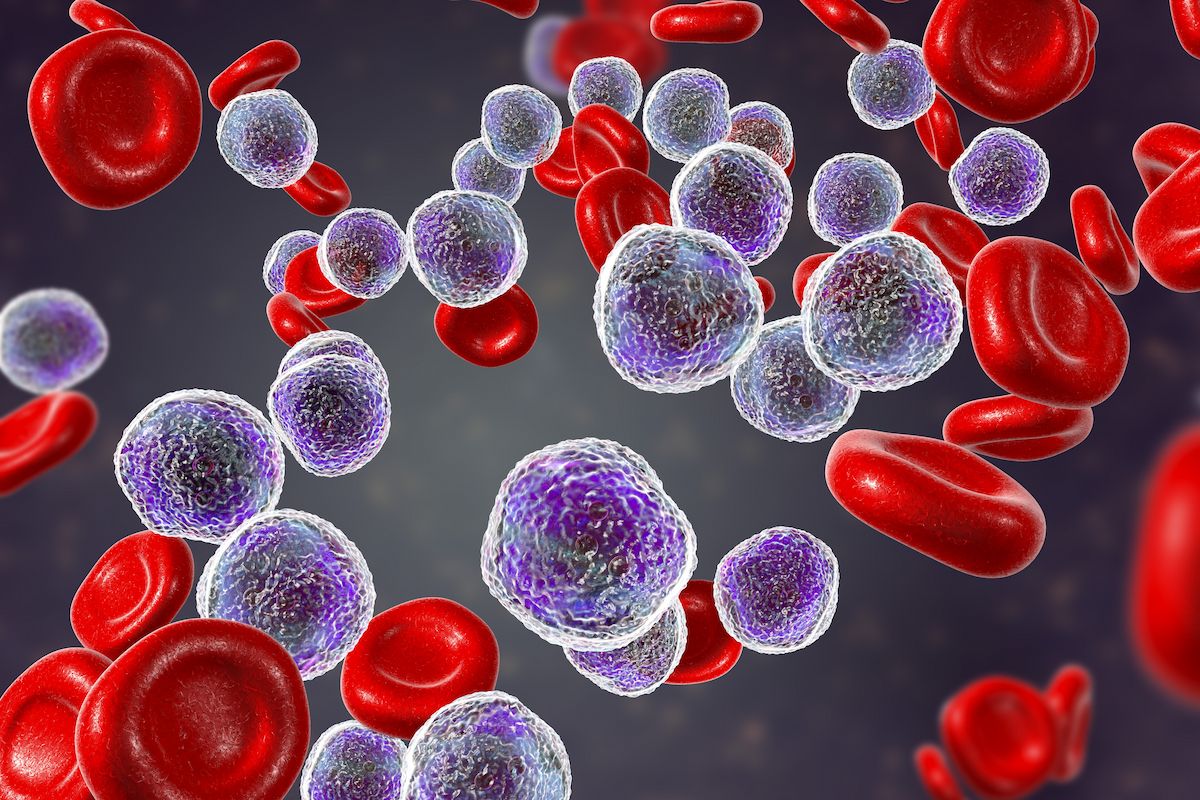Azer-Cel Achieves Complete Responses in Relapsed/Refractory DLBCL
Complete responses were observed in a small cohort of patients with DLBCL who have previously received autologous CAR T-cell therapy.
Two of 3 evaluable patients in cohort B of the study have achieved CRs after receiving azer-cel, lymphodepleting chemotherapy, and interleukin 2 (IL-2), indicating an overall response rate (ORR) and CR rate of 67%.

Three complete responses (CRs) have been seen in a small cohort of patients with diffuse large B-cell lymphoma (DLBCL) who have received azercabtagene zapreleucel (azer-cel), an investigational allogeneic CD19 CAR T-cell therapy, according to findings reported by developers Imugene from a phase 1b trial (NCT03666000).1
Two of 3 evaluable patients in cohort B of the study have achieved CRs after receiving azer-cel, lymphodepleting chemotherapy, and interleukin 2 (IL-2), indicating an overall response rate (ORR) and CR rate of 67%. One response lasted for over 90 days, and the other was sustained for over 120 days. All 4 patients in cohort B have progressed on 4 to 5 prior therapies, including autologous CAR T-cell therapy. One patient is still awaiting evaluation, and more patients are expected to be enrolled in this cohort.
Of the 10 patients in the phase 1B study, 9 from cohorts A and B are considered evaluable, having qualified for at least their first 28-day scan. One patient in cohort B is awaiting their 28-day scan.
In cohort A, 6 patients received azer-cel and lymphodepleting chemotherapy. One patient achieved a partial response, and 1 patient achieved a CR, yielding an overall response rate (ORR) of 33%.
In cohort B, one patient had stable disease, with a decrease in tumor size—potentially due to T-cell infiltration—and an increase in signal intensity, which might indicate pseudoprogression. This patient is continuing to be assessed for response.
“To maximize the response rates and durability further, we added a very low dose of IL-2 to the regimen in cohort B,” said Leslie Chong, managing director and chief executive officer at Imugene.1 “We are pleased with the results, which suggest improved outcomes in patients, and we look forward to amassing more data using this dosing regimen.”
To enroll on the study, patients are required to have unequivocal aggressive CD19-positive relapsed/refractory B-cell non-Hodgkin lymphoma confirmed by archived tumor biopsy tissue from last relapse following CD19-directed therapy and corresponding pathology report or, when applicable, by pretreatment biopsy or flow cytometry of fine needle aspirate.2 In the phase 1b dose expansion portion, eligible disease subtypes include DLBCL not otherwise specified; high-grade B-cell lymphoma; and DLBCL that has transformed from follicular lymphoma, marginal zone lymphoma, or Waldenstrom macroglobulinemia.
Further eligibility criteria include measurable or detectable disease according to the Lugano Classification and having received at least 2 prior lines of anti-cancer therapy for DLBCL, including 1 chemoimmunotherapy regimen, or 1 prior line if there isn’t a second-line therapy of known benefit for their disease type. For patients with Richter’s transformation, only 1 prior line of therapy is required. Patients must have received autologous CD19-directed CAR T-cell therapy and shown clinical response at day 28 or later before either relapsing or progressing. To be included in the expansion cohort, patients must have an ECOG performance status of 0 or 1 and an estimated life expectancy of at least 12 weeks according to investigator’s judgment.
Disqualifying factors include active hemolytic anemia and the need for urgent therapy due to tumor complications.
“I am proud of our clinical development team who assessed ways to enhance azer-cel's durability of response, as one of the biggest challenges in CAR T therapy is ensuring that the modified T-cells stay in the body long enough to kill cancer cells,” added Chong.1
Developers aim to provide updated data following continued recruitment in cohort B and send a comprehensive package to the FDA for a potential registrational phase 2/3 trial.
References
- Three complete responses in azer-cel allogeneic CD19 CAR T phase 1b trial in blood cancer (diffuse large B-cell lymphoma). News release. Imugene. September 2, 2024. Accessed September 16, 2024. https://tinyurl.com/2h28v88a
- Dose-escalation, dose-expansion study of safety of azer-cel (PBCAR0191) in patients with R/R NHL and R/R B-cell ALL. ClinicalTrials.gov. Updated July 3, 2024. Accessed September 3, 2024. https://clinicaltrials.gov/study/NCT03666000
Highlighting Insights From the Marginal Zone Lymphoma Workshop
Clinicians outline the significance of the MZL Workshop, where a gathering of international experts in the field discussed updates in the disease state.